Most Popular Products
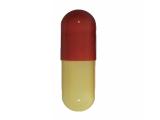
Cenmox
Cenmox is an antibiotic used to treat bacterial infections. It prevents growth of bacteria in the body.
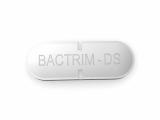
Generic Bactrim
Generic Bactrim is an antibiotic used to treat infections of the ear, urinary tract, lungs.
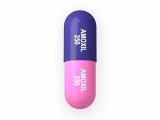
Generic Amoxil
Generic Amoxil is an inexpensive antibiotic used to treat certain kinds of bacterial infections.
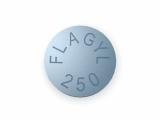
Generic Flagyl
Generic Flagyl is used to treat bacterial infections of the vagina, stomach, liver, joints, brain, etc.

Generic Cipro
Generic Cipro is a quinolone antibiotic used to treat a variety of bacterial infections.
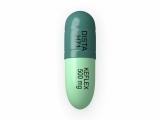
Generic Keflex
Generic Keflex is a cephalosporin antibiotic used to treat infections caused by bacteria.

Generic Erythromycin
Generic Erythromycin is a macrolide antibiotic used to treat or prevent many different types of infections.

Generic Doxycycline
Generic Doxycycline is a tetracycline antibiotic used to treat infections and acne, and to prevent malaria.

Generic Zithromax
Generic Zithromax is a macrolide antibacterial drug indicated for the treatment of patients with infections.

Generic Ampicillin
Generic Ampicillin is a penicillin-type antibiotic used to treat many different types of infections caused by bacteria.
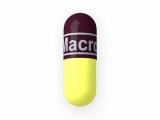
Generic Macrobid
Generic Macrobid is a moderately priced antibiotic used to treat urinary tract infections.
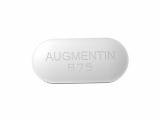
Generic Augmentin
Generic Augmentin is a broad-spectrum antibiotic used to treat many different infections caused by bacteria.
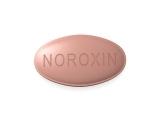
Generic Noroxin
Generic Noroxin is a fluoroquinolone antibiotic used to treat a variety of bacterial infections.
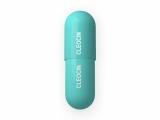
Generic Cleocin
Generic Cleocin is an antibiotic used to treat serious infections, including those caused by Staphylococcus aureus.

Generic Suprax
Generic Suprax is a semisynthetic, cephalosporin antibiotic used to treat a wide variety of bacterial infections.
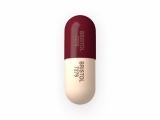
Generic Trimox
Generic Trimox is a penicillin antibiotic used to treat many different types of infections.

Generic Levaquin
Generic Levaquin is a fluoroquinolone antibiotic that fights bacteria in the body.
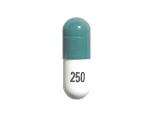
Generic Cephalexin
Generic Cephalexin is a cephalosporin antibiotic used to treat certain infections caused by bacteria such as pneumonia.
This website is an online pharmacy where you can buy antibiotics online. Nowadays, the Internet is overwhelmed by different online resources offering over the counter antibiotics but it is very important to find a reliable distributer. Our service is the very website you are looking for. We offer top-quality generic antibiotics at very reasonable prices.
Many people are afraid of scam pharmacies that offer to buy cheap antibiotics online but our service collaborates with the most certified manufactureres. There is no fraud to buy generic antibiotics online through our service. We are not intent on selling counterfeits and cheating our customers. Our main aim is to provide access to the most effective drugs able to treat different bacterial infections.
Our generic atibiotics differ from branded by price only. The main components are similar. As a result, they prodice the same therapeutic effect. The price for generics is considerably lower. This fact helps many people get treated n the highest level regardless of their income. If you still have any questions whether generics are worse than brand-name drugs, you may surf the web to find answers.
Where and how to buy antibiotics online?
All the antibiotics are arranged in a free access. It doesn’t matter whether you are going to buy Doxycycline or Amoxicillin online. We figure out our ordering procedure is simple. Comply several steps and submit an order. Get acquianted with positions from our online catalog. Then, add Amoxicillin to the shopping cart where all the order details will be given. If you stop shopping, proceed to the checkout. Fill in the required data to submit and order. The order is paid online with Visa, MasterCard, Discover, JCB, and ACH.
We respect our customers’ rights for confidentiality that’s why we do not disclose any personal data or order details. The parcels are discreet with no labels on it. Even a post office won’t have an idea what there is inside the parcel. This helps us get credit from our customers. We carry out international delivery right to the specified shipping address. The parcel may be delivered right to your door. Are still doubtful whether our pharmacy is the best place to buy antibiotics online?
How to order
Complete 4 steps to get your antibiotics
 1. Look for your medication
1. Look for your medicationSurf the online catalog to find the medication you need
 2. Submit an order online
2. Submit an order onlineFill in the required data and submit an order online
 3. Prescription and payment
3. Prescription and paymentSend us your Rx and pay online with credit cards
 4. Delivered to the specified address
4. Delivered to the specified addressParcels are brough right to your door
What are antibiotics?
Antibiotics are substances that selectively inhibit the vital activity of microorganisms. The selective action implies the activity only against certain stems and types of microorganisms. For example, fusidic acid has a high effectiveness against staphylococci, including methicillin-resistant, but does not affect pneumococci GABHS.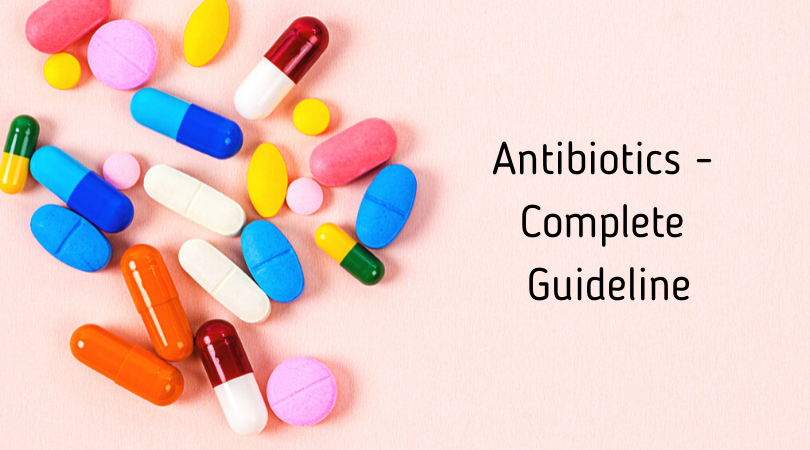
Types of antibiotics
The antibacterial drugs are considered in terms of the nature, spectrum and mechanism of their action. Antibiotics act directly on the etiological factor, and are distinguished into bacteriostatic and bactericidal by the nature of the action:
- bacteriostatic drugs inhibit the growth and reproduction of microorganisms. They do not cause their death. Moreover, it is assumed that the mechanisms of immune defense are able to independently cope with the destruction and elimination of bacteria. Bacteriostatic drugs include: macrolides, clindamycin, streptogramins, chloramphenicol, tetracyclines.
- bactericidal drugs contribute to microorganisms’ death, the body only needs to provide their elimination. These include: beta-lactam antibiotics, aminoglycosides, fluoroquinolones, glycopeptides and others (trimethoprim, metronidazole, rifampicin, etc.).
For ease of use, it is recommended to classify antibiotics according to antimicrobial action spectra:
- acting mainly on gram-positive microflora: biosynthetic penicillins, oxacillin, first-generation macrolides, lincomycin, rifampicin, rifamycin, ristomycin, vancomycin.
- acting mainly on gram-negative microflora: polymyxin.
- a wide spectrum of action: semisynthetic penicillins (except oxacillin), cephalosporins, second-generation macrolides, tetracyclines, aminoglycosides.
- antifungal antibiotics: nystatin, levorin, amphotericin B, mycoheptin, griseofulvin, etc.
- antitumor antibiotics: olivomycin, rubomycin, etc.
Top strongest antibiotics
Cephalosporins
 Features: broad-spectrum antibiotics. route of administration: intramuscularly and intravenously. Diagnosis: pneumonia and many other severe infections in surgery, urology, gynecology. Cefixime is now widely used for oral administration.
Features: broad-spectrum antibiotics. route of administration: intramuscularly and intravenously. Diagnosis: pneumonia and many other severe infections in surgery, urology, gynecology. Cefixime is now widely used for oral administration.
Important patient information:
These antibiotics cause allergies less often than penicillins. But a person who is allergic to the penicillin group of antibiotics may develop a so-called cross-allergic reaction to cephalosporins. It can be used by pregnant women and children (each drug has its own age restrictions). Some cephalosporins are allowed from birth.
The most common side effects: allergic reactions, nausea, diarrhea.
The main contraindications: individual intolerance.
Penicillins
The main indications: quinsy, exacerbation of chronic tonsillitis, acute otitis media, sinusitis, exacerbation of chronic bronchitis, community-acquired pneumonia, scarlet fever, skin infections, acute cystitis, pyelonephritis and other infections.
Features: low-toxic broad-spectrum antibiotics.
The most common side effects: allergic reactions.
The main contraindications: individual intolerance.
Important patient information:
Drugs in this group are more likely than other antibiotics to cause allergies. If a rash, hives, or other allergic reactions occur, discontinue the antibiotic and consult a physician as soon as possible.
Penicillins are one of the few antibiotic groups that can be used by pregnant women and children from a very young age.
Drugs that include amoxicillin reduce the effectiveness of birth control pills.
Macrolides
The main indications: mycoplasma and chlamydia infection (bronchitis, pneumonia in people over 5 years old), quinsy, exacerbation of chronic tonsillitis, acute otitis media, sinusitis, exacerbation of chronic bronchitis, whooping cough.
Features: antibiotics, released mainly in the form of tablets and suspensions. Its effect manifests slightly slower than antibiotics of other groups. This happens due to the fact that macrolides do not kill bacteria, but arrest their reproduction. They relatively rarely cause allergies.
The most common side effects: allergic reactions, pain and abdominal discomfort, nausea, diarrhea.
The main contraindications: individual intolerance.
Important patient information:
The resistance of microorganisms to macrolides is developing quite rapidly. Therefore, do not repeat the treatment course with drugs of this group for 3 months. Some of the drugs in this group can affect the activity of other drugs, as well as less absorbed when interacting with food. Therefore, you must carefully study the instructions before using macrolides.
Fluoroquinolones
The main indications: severe otitis externa, sinusitis, exacerbation of chronic bronchitis, community-acquired pneumonia, dysentery, salmonellosis, cystitis, pyelonephritis, adnexitis, chlamydia and other infections.
Features: potent antibiotics, most often used for severe infections. They can disrupt the formation of cartilage, and therefore are contraindicated in children and expectant mothers.
The most common side effects: allergic reactions, pain in the tendons, muscles and joints, pain and discomfort in the abdomen, nausea, diarrhea, drowsiness, dizziness, increased sensitivity to ultraviolet rays.
The main contraindications: individual intolerance, pregnancy, breasfeeding, age up to 18 years.
Important patient information:
Fluoroquinolones for oral administration should be washed down with a full glass of water, and in total during the treatment period, drink at least 1.5 liters per day. For complete absorption, it is necessary to take drugs at least 2 hours before or 6 hours after taking antacids (anti-heartburn drugs), iron, zinc, bismuth preparations. It is important to avoid sun bathing during drugs’ use and for at least 3 days after the therapy end.
The basic rules of antibiotic therapy
- To define the causative agent of the disease;
- To identify drugs to which the pathogen is most sensitive;
- With an unknown pathogen, use either a drug with a wide spectrum of action, or a combination of two drugs, the total spectrum of which includes probable pathogens’ treatment and prevention;
- Start therapy as early as possible;
- Doses of the antibotics should be sufficient to provide concentrations necessary for reproduction (bacteriostatic) or destroying bacteria (bactericidal);
- The therapy duration should be sufficient; a decrease in body temperature and a weakening of other symptoms are not indicators to discontinue the antibiotic;
- A significant role is played by the choice of administration routes, considering that some of them are not completely absorbed from the gastrointestinal tract, poorly penetrate the blood-brain barrier;
- The combined use of antibacterial agents should be justified, since if the combination is incorrect, the total activity can weaken, and their toxic effects can be summarized.
Antibiotics can kill only cellular microorganisms (fungi, bacteria), but they are ineffecive against viruses that are part of the cell.
Antibiotics can:
- destroy the cell wall of bacteria and block the enzymes that restore them;
- stop biological processes in the cell, penetrating inside of it;
- destroy the cell membrane of bacteria.
Their action is based both on the microorganism destruction, and on its growth slowdown.
How do antibiotics work?
There are several modes of how antibiotics work:
- selectively – the greater this selectivity is, the less influence the antibiotic has on the body (antibiotics from the penicillin and cephalosporins group are the safest in this regard);
- have a spectrum of action – the degree of influence on various types of bacteria. However, the width of the spectrum may turn out to be of poor quality in relation to the human body.
- excessive use of antibiotics, even in cases when they do not help, has resulted in the resistant bacteria development. For example, methicillin-resistant Staphylococcus aureus.
What is important to know if antibiotics are still prescribed?
- Finish the prescribed course of antibiotics, even if the symptoms disappear earlier. Quite often, the symptoms of the disease disappear or noticeably weaken, when taking antibiotics, even a few days before the course end specified by the doctor. The patient often has a great temptation not to finish the course. However, at this point, the pathogen is not yet completely destroyed. If you withdraw the antibiotic, a relapse may occur. As a result, the pathogen will become resistant to this antibiotic. Therefore, the infection must be eliminated completely if you have taken the entire course prescribed by the doctor, regardless of symptoms’ disappearance.

- Follow the prescribed doses and regimen, because the stability of the antibiotic concentration in the blood plasma depends on them. Each antibiotic can effectively kill bacteria only if its plasma concentration is not lower than a certain minimum value. If you skip the drug or reduce the dose yourself, its plasma concentration may be lower than the minimum necessary. Consequently, pathogenic bacteria will again begin to multiply and may become resistant to the antibiotic. Treatment will be ineffective, the drug will have to be changed, and the course should be repeated.
- Do not drink alcohol, so as not to enhance antibiotics’ toxic effect.
Does alcohol reduce the effectiveness of antibiotics?
The moderate use of alcoholic beverages does not prevent most antibiotics from fighting pathogenic bacteria. That is, theoretically, you can drink alcoholic beverages. But still it is better to avoid this because alcohol enhances the side effects of antibiotics:
- drowsiness;
- dizziness;
- slight nausea;
- indigestion.
That is, you can get:
- severe headache;
- stomach cramps and vomiting;
- excessive sweating;
- cardiopalmus;
- a sharp increase in blood pressure;
- liver damage;
- death.
Given that the body is also weakened by the infection at this time, drinking alcohol (even if it almost does not harm health) can slow recovery process.
Drinking is not recommended not only while taking antibiotics, but also 3 days after therapy discontinuation.
Antibiotic vs antiseptic
What is antiseptic?
Harmful organisms can be found in subcutaneous wounds and abrasions or spread inside the body, affecting tissues. The actions carried out in order to destroy/stop the development of pathogens are called antiseptics. Such measures should not be confused with aseptic, which is done in order to prevent the penetration of microbes into the wound.
There are 4 main methods for antiseptics’ implementation. Two of them – biological and chemical – are precisely connected with the use of drugs called antibiotics and antiseptics, respectively. Other measures are the mechanical treatment of the affected area (removal of pus, blood, infected tissues) and exposure to pathogens by physical measures (creating conditions in which microbes cannot exist).
Origin
Considering the difference antibiotic vs antiseptic, it is necessary to dwell on what they are created from. So, the means obtained on the basis of biological material are considered as antibiotics. Therapeutic substances, in this case, are produced by molds, certain bacteria, actinomycetes. However, semi-synthetic compounds, as well as antibacterial chemotherapy drugs of the corresponding action, are often called antibiotics.
In turn, antiseptics (in the narrow sense) are understood to be substances of chemical origin. These include, for example, boric acid, anolyte, iodine solution and the so-called brilliant green. Preparations of this type are stored for a very long time.
Mode of application
Antibiotics are produced to eliminate both external and internal pathological phenomena. In the latter case, after taking the medicine, the active substances enter the focus of infection through blood flow. One or another antibiotic is prescribed taking into account its compatibility with other medications prescribed to the patient.
Antiseptics are the means used, as a rule, for external treatment, in which a direct effect on the affected area is carried out. With the use of such antiseptics, wounds and cavities are washed, local tissue pharmacopuncture is performed. Antiseptics can also be applied to painful areas in the form of ointments and powders. Compounds of this type are characterized by poor absorption, they cause adverse reactions quite rarely.
Action spectrum
The useful activity of antibiotics is selective. This means that a specific antibiotic can more often act in the required way only on certain types of pathogenic agents.
Meanwhile, most antiseptics are strong against all kinds of pathogens. Moreover, the resistance of microorganisms to similar drugs is very low.
Comparative table
| Antibiotics | Antiseptics |
| Biological origin | Chemical origin |
| Many of them are taken orally | As a rule, these substances are applied locally |
| Selective effect | Broad-spectrum substances |
| Cause severe side effects | Rarely cause side effects |
| Good absorbability | Bad absorbability |
| Pathogens can cause resistance to antibiotics | All the pathogens are resistant to antiseptics |
| Small shelf life | Long shelf life |
Antibiotics during pregnancy
Any pregnant woman can get bronchitis, pneumonia, tonsillitis, tonsillitis, otitis media or any other infectious disease that is treated only with antibiotics. How compatible is antibiotic treatment with pregnancy?
It is believed that until the formation of all organs and systems of the fetus and placenta, any treatment of the pregnant woman with antibiotics is undesirable. This is 12-16 weeks of pregnancy. At this stage, the formation of all organs and systems of the fetus is completed. After this, the appointment of some antibiotics is allowed, which do not have a direct damaging effect on the fetus.
Pregnant women may take antibiotics from the group of semisynthetic penicillins, macrolides, and most cephalosporins, if indicated and prescribed by a doctor. Categorically during pregnancy, it is not possible to use tetracyclines and aminoglycosides, since they have a damaging effect on the fetus, they can cause damage to the hearing organ, tooth rudiments and bone tissue.
In what cases is antibiotic treatment during pregnaancy justified?
Antibiotic treatment is justified when a possible side effect of its use is less undesirable than the consequences of an existing disease. The basis for treatment may be extragenital, i.e. unrelated to the state of the reproductive organs, diseases (these include diseases of the respiratory system, ENT organs, some gastrointestinal infections, diseases of the kidneys and urinary tract), as well as some complications of the pregnancy itself, for example, polyhydramnios, colpitis and cervicitis (t ie, inflammatory processes of the lower genital tract), chorioamnionitis (inflammation of the membranes). In the presence of colpitis and cervicitis, a microbiological examination is carried out (urine culture), treatment is carried out in accordance with the sensitivity of the isolated microorganisms to antimicrobial agents.
Polyhydramnios is an obstetric pathology, which, in some cases, is associated with the presence of an infection in the body. This is a condition that often requires antibiotic treatment. With polyhydramnios, we examine pregnant women for infections and treat women with antibiotics unconditionally to prevent infection of the fetus. At the same time, the doctor conducts an examination to exclude other possible causes of polyhydramnios or hypamnions. Antibacterial drugs are also used in the treatment of sexually transmitted infections (chlamydia).
When and should antibiotics be given for a child?
Parents need to know that priscribing antibiotics for a child without a doctor’s recommendations is dangerous. The doctor finds out if certain antibiotics are suitable for the child, and only then prescribes them.
These questions and answers to them will help you understand such a difficult topic as antibiotics for children infections:
- My child has a severe cold. Why doesn’t the doctor prescribe antibiotics? Acute respiratory syndrome is caused by viruses. Antibiotics are used to treat infections caused by bacteria. Most symptoms of a cold are not severe, the child will recover without antibacterial agents.
- May a common cold transform into a bacterial infection? Why wait for this when antibiotics can be taken right away? In most cases, bacterial infections do not transform into viral ones. If antibiotic-treated viruses are used, antibiotic-resistant bacteria can appear. In addition, a child can get diarrhea and other side effects from antibiotic therapy.
- Are antibiotics prescribed for ear infections? Antibiotics are prescribed for ear infections, but not always. In most cases, ear infections pass without antibiotics. If the child (over 2 years old) does not have a high temperature, it is worth waiting and observing the development of the disease. For pain in the ears, you can give your child over-the-counter pain medications. The doctor prescribes antibiotics if the temperature does not decrease and the pain lasts over 48 hours.
- Do I need to drink antibiotics for sore throats? No, you do not. In over 80% of cases, sore throat is caused by viruses. Keep in mind, viruses are not treated with antibiotics. Antibiotics should only be used to treat quinsy caused by group A streptococci. If the doctor suspects that the child has a streptococcal infection, he prescribes an analysis for streptococcus. If the result is positive, antibiotics are prescribed.
- Do antibiotics have side effects? Side effects after taking antibiotics occur in 1 out of 10 children. It can be a rash, nausea, diarrhea, abdominal pain. Be sure to tell the physician if the child has a reaction to antibiotics.
- How long does it take for antibiotics to work? Most symptoms of bacterial infections start to disappear within 48-72 hours after taking antibiotics. If there is no improvement during this time, you need to see a doctor. It is also important to undergo antibiotic treatment to the end. Otherwise, the infection may not be completely cured and the symptoms will re-appear.
- Can be antibiotic resistance developed? Improper use of antibiotics can lead to the resistant bacteria formation. These are bacteria that are no longer destroyed by antibiotics. Therefore, it is important to take antibiotics that are most specific for the infection.
The most common side effects of antibiotics
Antibiotics have a wide range of adverse reactions. Conventionally, they can be divided into several groups:
- Gastrointestinal tract disorders. Symptoms are nausea, vomiting, diarrhea, or constipation. They appear almost immediately after taking the medicine and stop at the end of the course. To get rid of these unpleasant consequences, you can replace the antibiotic in capsules or tablets with injections. Naturally, only a doctor can do this. Also, taking antibiotics on a full stomach will help to improve well-being, since food can protect the mucous membrane from direct contact with the medication.
- Intestinal dysbiosis. Antibiotics kill not only pathogenic, but also beneficial microbes, as a result of which the composition of the intestinal microflora is disrupted. Dysbacteriosis manifests itself in the form of diarrhea, flatulence and constipation. These symptoms appear a few days after taking antibiotics and often do not disappear after treatment. To avoid dysbiosis, you need to take drugs that normalize the intestinal microflora while taking an antibiotic.
- Allergy. Hypersensitivity can occur in the form of a rash and itching, urticaria, Quincke’s edema, or anaphylactic shock. If any symptoms of an allergic reaction appear, you should immediately consult a doctor who will either prescribe an antihistamine or replace the antibiotic.
- Candidiasis. The disease appears when there is a violation of the microflora composition, the active growth of Candida fungi begins in the body. Symptoms of candidiasis are white plaque in the oral cavity or in the genital area, as well as burning and itching. Thrush begins, usually a couple of weeks after the start of taking antibiotics. As a preventive measure, as well as for the treatment of thrush, it is recommended to take antifungal drugs or the use of topical antiseptics.
- Toxic damage to the liver, kidneys and nervous system. Liver problems are indicated by high fever, icteric skin color, discoloration of urine and feces. Kidney damage is indicated by lower back pain, severe thirst, a marked change in the amount of urine. Damage to the nervous system can manifest as dizziness and headache. In severe cases, problems with hearing, vision and coordination are possible. Consult a doctor as soon as possible to prescribe treatment.
- Hematologic disorders. These are the most severe side effects after taking antibiotics. They can manifest as hemolytic anemia and require immediate medical attention.
Side effects of antibiotic treatment occur when different factors coincide, so only a doctor should prescribe an antibiotic. In this case, the risk of adverse reactions will be minimal. Before taking an antibiotic, it is necessary to study the instructions in detail and follow them in a strict manner.
Do antibiotics make you tired?
Yes, they can. Doctors used to think that the effect of fatigue while taking antibiotics was not caused by drugs, but by the disease itself. But in recent years, other opinions have appeared. It is worth recalling that antibiotics fight bacteria, not viruses. They can kill bacteria, and can inhibit their growth, allowing the immune system to cope with the infection.
Until now, doctors have connected the feeling of tiredness when taking antibiotics to the disease itself: sweating, diarrhea and vomiting cause dehydration, fever and muscle pain – a feeling of weakness. So complaints about weakness when taking antibiotics were not taken seriously.
Then the hypothesis arose that weakness appears due to the fact that antibiotics suppress not only pathogenic microbes, but also the beneficial intestinal microflora, and this in turn leads to diarrhea, vomiting and the mentioned fatigue.
But, apparently, this is an incomplete explanation of the reasons. Even in the absence of severe inflammation or dehydration, some patients still feel weak. Probiotics that should restore beneficial microflora do not help either.
That is, it is possible that weakness is a side effect of the antibiotic itself about which pharmaceutical companies know. They even indicate this on the list of side effects in the instructions for the medicine and materials for doctors.
But weakness is not only caused by antibiotics. In addition to them, medications for lowering blood pressure, drugs for heart failure, antidepressants, anxiolytics used in anxiety disorders, antiepileptic drugs, and some other medications can give such an effect.
Why is this happening? Apparently, the disease itself, the defeat of the natural microflora, the effect of antibiotics on brain neurons and muscle cells are involved in this feeling appearance.
How long do antibiotics stay in your system?
The time during which the drug stays in your system is equal to the time the drug is eliminated from the body. This indicator directly affects the effectiveness of treatment, the strength of the drug effect.
First of all, the doctor pays attention to pharmacokinetics. Thanks to hese indicators, he/she understands whether the medication is suitable for the patient, how long the course will last, whether it is effective.
Antibiotics with both quick and long excretion, have their pros and cons. For example, with a long stay in the body, they kill more agents of the virus. But the long presence of a substance can harm health. Fast-releasing drugs do less damage, but they heal more slowly.
Knowledge of the breakdown, excretion of a substance from the body helps to avoid side effects, complications, and to differentiate medications from one another.
If the people are planning a pregnancy, it is significant to control the process of removing the antibiotic from the body. For example, Doxycycline within 60 days negatively affects attempts to become pregnant, and prevents successful conception. Amoxicillin for 30 days blocks male reproductive function.
How much and how is an antibiotic excreted from the body?
If the drug is taken orally, then its absorption is up to 80% after 20 minutes. The rate of absorption directly affects the rate of transport from the body. It occurs when the drug reaches a high concentration in the blood, urine, and lymph.
Some antibiotics are able to be excreted from the body after 6-12 hours, while others remain for 1-2 weeks.
Different organs are removed from the antibiotic at an unequal rate. Muscle tissue is the fastest to excrete an antimicrobial, followed by adipose, and the last – bone.
The higher the excretory coefficient of an organ, the greater the antibiotic release through it. But antiviral agents are the least deposited in organs with a high excretion rate. How much the body needs to fully remove antibiotics is affected by the rate of absorption, adsorption strength, and the efficiency of excretory organs.
Over 50-60% of the substance is excreted in the urine, 40% is transported through the intestines, the rest is distributed between:
- kidneys;
- glands – sweat, sebaceous, salivary;
- respiratory organs.
The antibiotic is excreted through:
- sweat;
- saliva;
- sebum;
- sputum;
- feces;
- bilis;
- urine.
How to remove antibiotics faster?
Each course of antibiotic therapy causes severe damage to the human immune system, upsets the normal balance of intestinal microflora. This indicates that it is necessary to remove antibacterial substances from the body. The duration of rehabilitation therapy depends on how long a person has taken antibacterial drugs.
Infusions and teas help get rid of antibiotics. Due to the high content of tannins in them, the detoxification occurs quickly. It is useful to drink as much clean water as possible, which allows you to free the kidneys from harmful substances.
The use of drugs that restore liver function helps to optimize its work. It is the liver that is the main natural filter that neutralizes toxic products.
It will be useful to help the intestines. Using products with lactobacilli and bifidobacteria (kefir, fermented baked milk, cottage cheese), as well as probiotics, it is possible to quickly restore the normal balance of intestinal microflora and eliminate dysbiosis.
In severe cases, detoxification therapy is used in a healthcare institution. This involves the intravenous administration of infusion drugs, the use of diuretics, enterosorbents. Immunomodulators may be recommended for the patient.
Antimicrobial drugs, despite their advantages, belong to a number of potent substances with a high degree of toxicity. One cannot ignore the fact that after using antibiotics, the products of the destruction of bacteria and body tissues accumulate in the body. This adversely affects the well-being of a person, the functions of various organs, therefore, it may require the use of additional means or methods of detoxication.
How to get antibiotics without prescription?
 The main aspect every patient should remember is the doctor’s recommendation is significant. The physician will make medical examination, define the cause of your health problem, and work out a treatment plan (define the correct dosage). In any case, there is still a way to get antibiotics without presription.
The main aspect every patient should remember is the doctor’s recommendation is significant. The physician will make medical examination, define the cause of your health problem, and work out a treatment plan (define the correct dosage). In any case, there is still a way to get antibiotics without presription.
There are different online servies offering to buy medications in several clicks. Over the counter antibiotics (OTC) may be bought but the questions about dosage, therapy duration should be specified by a healthcare physician only. There are too many side effects appeared as a consequence of uncontrolled antibiotic intake.
Make sure your health won’t be damaged by such a therapy. Take it only as prescribed by a doctor or specified in the instruction for use.
Reviews

Merry:
"I have bought antibiotics from uppmd.org. I have comlicated bacterial infection of upper respiratory track. My doctor prescried to me a potent antibiotic. Brand antibiotic costs too much and I made a decision to buy generic. I have arranged an order quickly and submit it. Paid online and wait for the parcel. Nothing special should be done to submit an order. The ordering procedure is simple, all the steps are specified on the front page. My parcel comes within 5 business days (express delivery). The parcel was carefully packed. The drug has a good shelf-life. At the end of the course, I feel pretty good and have nothing resembled I suffered severe bacterial infection. My point of view is that this website is a reliavle and trustworthy. I was not anxious about my personal data or improper quality of antibiotics. I am glad I have found this online pharmacy. I do recommend it for all!"

Klara:
"Even once in life every woman comes across with the genital bacterial infection. I am not an exception. My gynecologist recommends taking antibiotics to heal and prevent bacteria distribution. That time, I had lack in funds and decided to choose generic antibiotic. The best place to buy antibiotics online is uppmd.org. The ordering is simple: every step is predictable. The interface is well-arranged, user-friendly. Price is reasonable. Delivery is fast and confident. The wrapper of the parcel is non-transparent. That's what I saw when got the parcel. I like this online service. I respect people doing their job well."

Logan:
"Antibiotics play an entire role in keeping people healthy. I faced the problem bacterial urological infection. That's a shame to visit a physician with such a problem but I have no way out. My doctor prescribed me Zithromax (Azithromycin) and recommend buying generic analog. I follow his advice and surf the net to find the right generic. This chosen online pharmacy has a generic I need for the treatment. The therapeutic effect is the same as branded has. I have no side effects, except for slight headache. I am still ordering antibiotics (if necessary) from this online pharmacy. I appreciate this website due to several reasons: quality, price, fast delivery, confidentiality, security during ordering. All my friends are reqular customers of this store. I do recommend this service and wish them many, many satisfied customers. In a nutshell, buy antibiotics online, they have the same quality as in conventional drugstores but their price is considerably reduced."
Read All Reviews